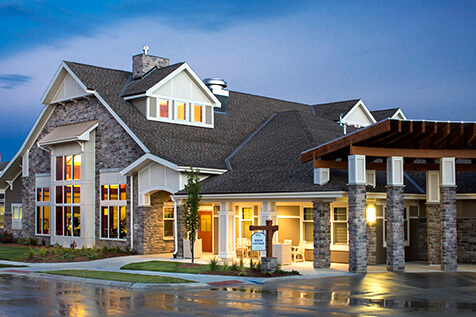Aging homes often present unique challenges that require careful planning and thoughtful execution to maintain their integrity, functionality, and aesthetic appeal. As homes age, issues such as outdated infrastructure, wear and tear, and evolving building codes can make living conditions less comfortable and potentially unsafe. Addressing these concerns involves more than just patchwork repairs—it demands comprehensive solutions considering the home’s original design, current condition, and future needs. General contractors are crucial in guiding homeowners through this process, offering a broad range of services that transform aging properties into safe, efficient, and attractive living spaces. We will explore how general contractors bring value by managing the complexities of renovating and restoring aging homes.
How General Contractors Address the Complex Needs of Aging Homes
1. Comprehensive Assessment and Planning
General contractors in Scottsdale begin by conducting a detailed evaluation of the home’s current state. This assessment includes identifying structural weaknesses, outdated electrical or plumbing systems, and potential safety hazards such as mold or asbestos. By understanding the scope of work required, contractors help homeowners prioritize repairs and renovations that will impact the home’s longevity and safety. The planning phase also considers the homeowner’s lifestyle needs and budget constraints, creating a realistic roadmap for the project. Such thorough preparation ensures that unexpected issues are minimized during the renovation process.
2. Coordinating Permits and Compliance
Aging homes often require upgrades to meet modern building codes and regulations. Navigating these legal requirements can be overwhelming for homeowners unfamiliar with local laws and standards. General contractors handle the acquisition of necessary permits and ensure all work complies with current regulations. This protects homeowners from potential fines or legal issues and guarantees that the renovation enhances the home’s value and functionality in line with safety expectations. Contractors keep abreast of changing codes, which can be especially important in areas prone to environmental challenges or with strict historic preservation rules.
3. Managing Multiple Trades and Timelines
Renovating an aging home often involves skilled tradespeople such as electricians, plumbers, carpenters, and painters. Coordinating these professionals requires strong organizational skills and experience to keep the project moving smoothly and on schedule. General contractors serve as the central point of contact, managing the sequence of work and ensuring that each trade completes their tasks on time and to the required standards. Effective management reduces delays, cost overruns, and miscommunication, common risks in home renovation projects involving multiple contractors.
4. Upgrading Infrastructure and Systems
One of the most critical aspects of working on aging homes is the modernization of essential systems. General contractors oversee replacing or repairing outdated electrical wiring, plumbing lines, heating and cooling systems, and insulation. These upgrades improve the home’s safety, energy efficiency, and comfort. For example, replacing old wiring reduces fire risk and supports modern appliances, while improved insulation and HVAC systems lower energy bills and enhance indoor air quality. Coordinating these upgrades requires technical knowledge and experience with various building systems, ensuring that new installations integrate seamlessly with the existing structure.
5. Preserving Architectural Integrity While Modernizing
Aging homes often have unique architectural features and craftsmanship that give them character and charm. General contractors understand the importance of preserving these elements while introducing modern conveniences. Whether restoring original woodwork, maintaining period-appropriate window styles, or matching historic materials, contractors balance preservation with renovation. This approach respects the home’s heritage and appeals to homeowners who want the comfort of updated spaces without losing the identity of their property. Skilled contractors know how to adapt restoration techniques and source materials that honor the original design.
6. Addressing Safety and Accessibility Needs
As homes age, they may become less accessible or safe for residents, especially seniors or those with mobility challenges. General contractors help by incorporating modifications that improve accessibility, such as installing ramps, widening doorways, or upgrading bathrooms with walk-in showers and grab bars. They also focus on removing hazards like uneven flooring, poor lighting, or outdated staircases. These improvements enhance the livability of aging homes, allowing residents to remain comfortably and safely in their homes longer. The combination of safety and accessibility upgrades reflects a thoughtful approach to renovation that considers changing homeowner needs over time.
7. Enhancing Energy Efficiency and Sustainability
Energy efficiency is a growing concern in home renovation, especially for older homes that often suffer heat loss, drafts, or inefficient appliances. General contractors guide homeowners toward solutions that reduce energy consumption and environmental impact. This might include installing energy-efficient windows, upgrading insulation, or integrating solar panels and energy-saving lighting. These improvements reduce utility costs and contribute to a more sustainable home environment. Contractors help homeowners evaluate potential upgrades based on their budget and expected return on investment, ensuring that energy-saving measures are practical and effective.
General contractors bring a comprehensive approach to addressing the challenges faced by aging homes. From initial assessments to finishing touches, they manage the complexity of renovation projects that involve multiple trades, compliance with codes, and preservation of original features. Their role extends beyond construction work to include planning, communication, and problem-solving, all aimed at transforming older houses into comfortable, safe, and efficient living spaces.
The care and attention that general contractors provide to aging homes are invaluable for homeowners looking to maintain the value and comfort of their properties. By coordinating repairs, upgrades, and restorations, contractors help navigate the many challenges of older structures. Their ability to balance modernization with preservation ensures that these homes continue to serve as welcoming and functional spaces for years to come. Whether addressing infrastructure, safety, or energy efficiency, the comprehensive services offered by general contractors deliver solutions that respect the past while preparing for the future.




